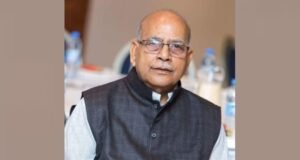
How to deal with major reservoir incidents such as the one in Derbyshire in August this year, holding 1.2m tonnes of water, which flooded following heavy rains at Toddbrook Reservoir, was among the key topics discussed by over 40 experts from the water industry, gathered at the University of East London last week.
The experts focused on a number of major issues regarding new ideas on managing water emergencies, both in the UK and worldwide.
The conference entitled ’emerging ideas in water emergency management,’ was a joint collaboration between the University of East London and the Chartered Institution of Water and Environmental Management (CIWEM).
With a panel made up of diverse speakers, the event examined the latest UK, European and international developments and innovations in managing water emergencies.
Alan Warren, technical director at Mott MacDonald and chair of the British Dam Society, one of a host of top speakers, alluded to the incident in Derbyshire and to many of the unique challenges in managing emergency situations such as at embankments and spillways at dam structures. As well as providing a historical perspective on the significance of the Toddbrook incident, he highlighted lessons learnt from historical dam failure incidents. These included issues such as emergency command structure in the country, and emergency work flow including monitoring of dams using drones and piezometers.
The conference covered a wide range of subjects including the use of novel computer applications in water quality issues, detecting water quality for customers who are end-users, with the latest equipment and tips on how to be prepared and trained in a critical water incident.
“Subjects such as chemical and biological risk to drinking water, effective risk decision making in the water industry and dealing with UK reservoir failure management in the present and future, were also discussed,” said Dr Ravindra Jayaratne, Reader in Coastal Engineering at the University’s School of Architecture, Computer Science and Engineering.
“We had delegates and exhibitors from Austria, Israel and the UK, exchanging ideas and expertise and it was also an opportunity for our civil engineering postgraduate students to mingle with the prominent speakers and exhibitors from the UK and overseas. They were able to share their knowledge and ideas, as well as explore graduate job opportunities after completion of their degrees at UEL.”
Dr David Tann, Head of the School of Architecture, Computer Science and Engineering added, “This was a unique opportunity for us at the University of East London to get together with so many top experts for the first time at such a conference to discuss new developments in water management.”
The top line up of speakers included Professor Clive K Thompson, visiting professor to the University, who is chair of the organising committee and one of the main organisers of the event, who formally opened the morning’s first technical session. He also chaired a Q & A session in the afternoon.
Among other speakers were Laura Moss, deputy chief inspector Drinking Water Inspectorate, talking about risk and preparedness for water emergencies and Dr. Eyal Brill, owner, Decision Makers Ltd, Israel, discussing the use of machine learning to identify water quality events. Additionally, Dr. Robert Hodgson, an Independent Geotechnical Engineer at humanitarian training organisation RedRUK, highlighted the challenges of restoring urban water supplies during and after complex emergencies such as conflicts and wars.
 Weekly Bangla Mirror | Bangla Mirror, Bangladeshi news in UK, bangla mirror news
Weekly Bangla Mirror | Bangla Mirror, Bangladeshi news in UK, bangla mirror news







